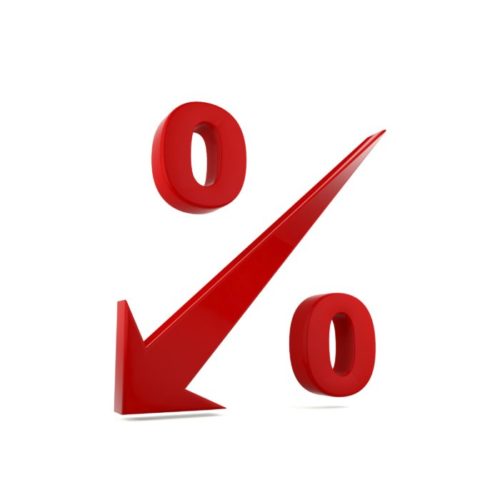While there are lower-risk and higher-risk fixed-income assets, investors could find no safe havens during the recent selloff. From the early 2020 highs to the March lows, investment-grade corporates, high yield, and preferred indices declined by 15%, 24%, and 38% respectively. This compares to the S&P500’s peak decline of 36% and highlights that liquidity trumps all else in market panics. Bond buyers were almost able to name their price when approached by forced and/or panicked sellers at the trough. Early 2020 provided another painful reminder of the importance of maintaining composure during tumultuous times. Furthermore, it is important to put recent fixed income volatility and performance in the context of history and to discuss the current landscape given historically low-interest rates.
Entering February 2020 interest rates were low by all historical measures and credit spreads were relatively tight resulting in relatively low yields across fixed income. Lower yields make fixed income more susceptible to unforeseen shocks such as the negative economic implications of Covid-19. So, the Fed’s actions to lower interest rates further had a relatively muted impact on bond yields/prices. The numerous other Fed actions to increase liquidity and maintain asset values did calm the markets, however, and kept credit spreads from blowing out even further. During the Global Financial Crisis, by contrast, Fed actions to lower interest rates provided an enormous buffer on bond price declines. In June 2007, the 10-year Treasury bond yield was over 5% before the Financial Crisis began. This allowed 10-year interest rates to decline 3 percentage points to just above 2% in December 2008. With 10-year yields at around 1.5% in early February, there was a much smaller buffer in rates this time around and the widening of credit spreads caused a precipitous drop in bond (and preferred) prices. Such a decrease in rates was not possible this time.
Regardless of Fed and government actions, as experienced during all panics, a rush to cash will overwhelm all fixed income asset prices in the short-term. However, we have seen a relatively strong recovery from all fixed income asset classes. As is typically experienced in recoveries, the highest quality investment grade securities recovered more quickly than high yield and preferreds. The recovery among high yield and preferred names has been greater, with less Covid-19 sensitive names recovering more significantly, as we would expect.
It is extremely important to remember that fixed income returns over the past 15 years have averaged over 5% because of the enormous systemic decline in interest rates (the average Investment Grade Bond has an ~12-year maturity so it is very rate sensitive). As a reminder, yields are the sum of Treasury interest rates and credit spreads, and investment-grade yields are 62% driven by interest rates and 38% by credit spreads. Therefore, the massive interest decline combined with credit spread tightening earned has driven these 5%+ annual returns. However, this is history, and in this case, investors should not expect history to repeat itself.
Looking forward, fixed-income yields are markedly divergent across the highest investment grade, lower investment grade, and high yield rated securities. The yields on the higher-rated investment-grade securities, rated A, are at historical lows with the 5-year A bond now yielding 1.42%. The lowest rated Investment Grade bonds, rated BBB-, are yielding more than double that at 2.98%. From 2005-2019, by contrast, A rated bonds yielded an average of 2.46% while BBB- rated bonds yielded 3.40%. With interest rates so much lower now, fixed income investors are being forced to accept half the yield for such safety. By owning a portfolio of individually selected bonds and preferreds, we closely assess this yield versus safety tradeoff on a bond-by-bond basis rather than simply relying on a credit rating.
While fixed income yields on investment grade are lower on average than they were historically, we recognize two major positive implications of these lower yields. One major positive is that equity valuations will benefit from lower discount rates as future earnings are worth more when discounted back to today’s dollars. Second, lower interest rates are a tremendous tailwind for companies to raise debt to increase liquidity to weather the economic impacts of Covid-19. While investment grade companies (and those less directly affected by Covid-19) will clearly have better access to relatively inexpensive debt, we have seen debt raised even by smaller, high yield, energy companies because the nominal yield of higher quality alternatives remains relatively low. While rates are lower and these are challenging times both personally and for portfolios, we continue to evaluate existing positions and to seize upon new opportunities created by the market uncertainty.
ACM is a registered investment advisory firm with the United States Securities and Exchange Commission (SEC). Registration does not imply a certain level of skill or training. All written content on this site is for information purposes only. Opinions expressed herein are solely those of ACM, unless otherwise specifically cited. Material presented is believed to be from reliable sources and no representations are made by our firm as to another parties’ informational accuracy or completeness. All information or ideas provided should be discussed in detail with an advisor, accountant or legal counsel prior to implementation. All investing involves risk, including the potential for loss of principal. There is no guarantee that any investment plan or strategy will be successful. ©ACM Wealth

